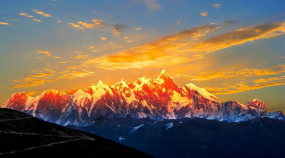This is loosely based on a Japanese article from the CJ Column.
https://citrusjapan.co.jp/column/cj-column/l010_202008.html
I visited Tibet on my college graduation trip. From Chengdu in Sichuan Province, it took about four days to arrive in Lhasa by Qinghai–Tibet railway. Along the way, I passed through the city of Golmud and various scenic areas.
Tibet is a mystery to many people around the world and conjures various thoughts and feelings. It is also currently a politically controversial region.
But when you’re in Tibet, you don’t notice the politics. The endless expanses of earth and sky make everything else seem insignificant.
I visited Tibet during the rainy season in August, but recommend visiting around May or June. My first view of the country was when I woke up at 4am, entered a car and viewed the road through the rain, feeling lonely and awaiting the dawn. I arrived at Lake Namtso, but couldn’t see the other side because of the rain. A few friends became sick from altitude sickness, but I was fine.
Lake Namtso is partially open to the public. You can ride a yak along its banks and purchase various accessories, but it’s better not to buy them if you don’t understand local customs. Tibetans hold funerals near Lake Namtso and many of the accessories are burial items. On the other hand, if you’re familiar with the goods, you may find some great bargains.
Butter tea and tsampa (flour mixed with butter tea) are well known Tibetan foods. They were a little too salty and earthy for my taste, so I preferred eating Tukpa noodles, which are similar to Japanese udon noodles, and Tibetan beef curry.
I recommend Tibetan noodles to those who like firm, spicy noodles. The soup has a very Tibetan taste and I feel happy when drinking it in cold weather.
Tibet gives visitors opportunities to change their perceptions and reconsider their lives. Many busy people from urban areas feel different about life after viewing its deep blue skies. You could say it’s an eye-opening slice of heaven.
